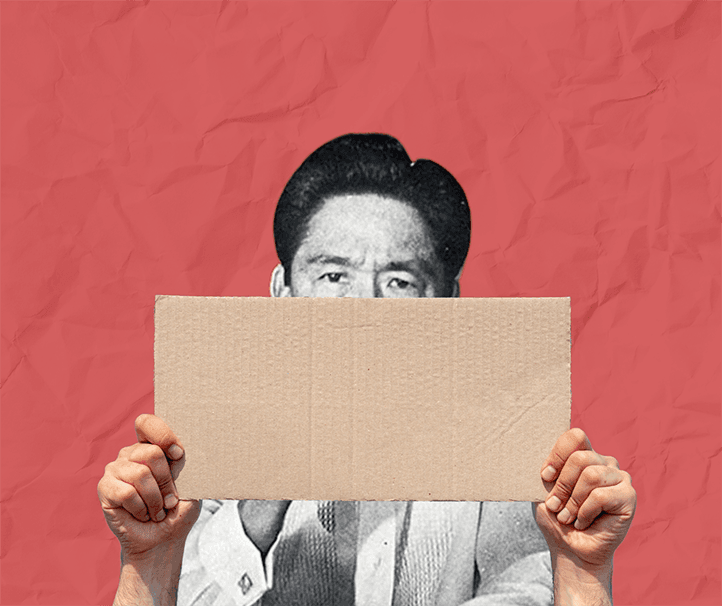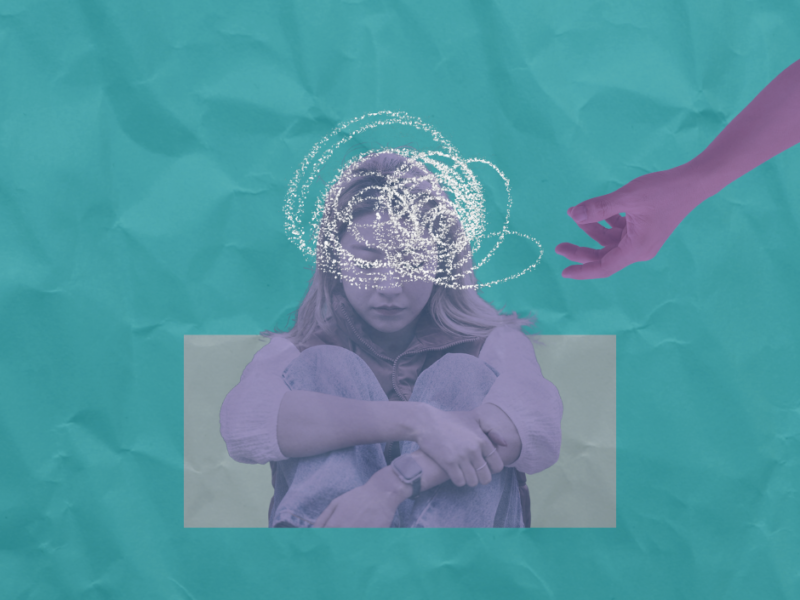The basics of civil disobedience
Back in February 1986, the people of the Philippines were doing what many believed to be the right thing to do for their country: they were breaking its laws.
They were refusing to pay their taxes, they were ignoring their electric bills and they were gathering in the street even as the government brought out their big guns to pressure them to disperse.
This came on the heels of the 1986 snap elections. The winner was said to be Ferdinand Marcos Sr., the dictator who put the country under martial rule and was accused of being responsible for the deaths, torture and detention of thousands. He supposedly beat his closest rival Corazon Aquino and was set to extend his rule which, at that point, had already reached 21 years.
There were many, however, who weren’t buying this. The Commission on Elections declared that Marcos won but its staff walked out during the counting because they noticed that massive cheating was happening to favor him. Additionally, the National Citizens’ Movement for Free Elections, an election watchdog, declared that Aquino actually beat Marcos and that she was indeed chosen by the people to be the eleventh president of the Philippines.
So what did the people do? For starters, her supporters treated her as their leader. When she held the People’s Victory rally in Luneta Park, around 2 million of them showed up to offer their support. When she called for a boycott of companies aligned with Marcos and his cronies, they stopped patronizing those brands. And when she called upon them to peacefully disobey the ruling administration she deemed fraudulent, they obeyed. Their greatest expression of this was the massive gathering at Epifanio de los Santos Avenue (EDSA)—that which is now known as the People Power Revolution, a nonviolent rally that ultimately urged Marcos to abandon his seat.
Such was the power of civil disobedience: a concept effectively used in the Philippines even though the country didn’t originate it.
Reportedly coined by American writer Henry David Thoreau, civil disobedience is defined as the act of refusing to comply with laws as a form of protest. In an essay discussing this matter, he argued that citizens should not blindly follow rules even if they are pushed by leaders put into power by the majority. In his mind, true patriots of any country are people who are guided by both conscience and reason; they who would be willing to challenge leaders and laws regardless of how popular they may seem. And sometimes, the challenge comes in the form of disobedience.
In many cases throughout history, people shared and expressed Thoreau’s beliefs. Many individuals have nonviolently broken laws to get their points across.
In the United States, during the early years of the civil right movement, Black activists would challenge segregation ordinances by doing sit-ins, a nonviolent form of protest where demonstrators occupy a space and refuse to leave until their demands are met or their message is heard.
In recent years, the spirit of civil disobedience continues to thrive among climate activists who tend to cause various forms of disruption in order to protest against powerful bodies that engage in law-protected practices that harm the planet. Those who condemn Israel’s genocide of Palestinians have also engaged in similar tactics. From disrupting public speeches to occupying public spaces, they have defied not only the rules of various establishments but also long-held beliefs (like Israel’s supposed righteousness.)
Thoreau himself took part in civil disobedience. He famously refused to pay his taxes because he was appalled by his president at that time: James K. Polk, a populist who—upon gaining power—immediately waged war against Mexico and furthered racial inequality by supporting slavery.
This may sound familiar to those reading the news in 2025. Donald Trump, after all, had returned to the White House through a populist presidential campaign that postured against other countries while courting the support of white nationalists through promises deemed either racist, bigoted, or just downright unwise. In his first week alone, he doled out a bevy of executive orders undermining the work of progressives. In response, people have been clamoring for pushback.
Given the rise of oppressive mandates in various parts of the world—a phenomenon tied to fascists regaining their confidence thanks to far-right candidates winning elections—civil disobedience may end up once again being a popular mode of protest.
Whether or not it proves effective, only time and context will determine that; what’s certain, however, is that as an action, it will result in reactions. And that’s but one of the things people should know before choosing to either engage in it or follow the law to the letter.
Know what it is and what you’re getting into.
A Google search on civil disobedience will immediately bring up images of people with placards, taking part in a rally. But while those can be expressions of civil disobedience, they only truly fall under that category when such gatherings are actually breaking laws.
That is, after all, the basic principle of the act: it is an exercise of righteous rule-breaking. And as a result, it may come with consequences. Activists all over the world know this. Some have been arrested; some have been assaulted, and some have had their lives disrupted.
Civil disobedience may come with dire consequences that people should be aware of before they take part in it. Aside from that, it is also an act ironically defined by its own set of rules that should be honored to ensure its success.
Raise your fist but hit no one with it.
When one engages in civil disobedience, one crosses a line separating the lawful from the unlawful. Beyond this, however, is yet another line that separates the violent from the non-violent. And those taking part in this hope to never cross this one.
There are many reasons for this and some of them have been discussed by Martin Luther King Jr., one of the most prominent figures of the civil rights movement which largely relied on nonviolent action. According to the Martin Luther King Jr. Research and Education Institute of Stanford University, King’s notion of nonviolence had six key principles.
“First, one can resist evil without resorting to violence,” the website said. “Second, nonviolence seeks to win the ‘friendship and understanding’ of the opponent, not to humiliate him. Third, evil itself, not the people committing evil acts, should be opposed. Fourth, those committed to nonviolence must be willing to suffer without retaliation as suffering itself can be redemptive. Fifth, nonviolent resistance avoids ‘external physical violence’ and ‘internal violence of spirit’ as well.”
Furthermore, research shows that nonviolence tends to be quite effective in causing change. According to the Harvard Gazette, researcher Erica Chenoweth discovered that “nonviolent civil resistance is far more successful in creating broad-based change than violent campaigns.” This is based on “Why Civil Resistance Works: The Strategic Logic of Nonviolent Conflict,” a research project they conducted with Maria J. Stephan.
For this, Chenoweth and Stephan gathered data on all violent and nonviolent campaigns from 1900 to 2006 which resulted in territorial liberation or the overthrow of a government. They found that “countries in which there were nonviolent campaigns were about 10 times likelier to transition to democracies within a five-year period compared to countries in which there were violent campaigns — whether the campaigns succeeded or failed.”
They theorized that this is due to several factors. For one, nonviolent campaigns are more likely to trigger defections from security forces, elites, and bureaucrats. This is seen in many successful revolutions like the one in EDSA.
Also, nonviolent movements tend to mobilize a broader range of participants, including women, elderly individuals, and people from diverse socioeconomic backgrounds. This broad participation makes it harder for governments to suppress the movement without facing backlash. This too was seen during the EDSA revolution which saw unity among strange bedfellows—from religious conservatives to the radical progressives, from the young to the old, from the heteronormative to the queer.
Also, the international community is more likely to support nonviolent groups that cannot be easily labeled as terrorist organizations—a title that world leaders try not to be associated with.
With all of these in mind, it is often highly recommended for people engaging in civil disobedience to exercise restraint and have training in nonviolence along with other preparations.
Prepare for the protest.
When civil disobedience happens, it does so because people looked for opportunities to engage in it. In some cases, however, the opportunities present themselves.
This is what happened to Rosa Parks, a Black activist now remembered as one of the most important figures of the civil rights movement.
Back on December 1, 1955, in a segregated Montgomery, Alabama, Parks rode a bus, paid her fare and sat in the back, at the first row of seats meant for Black people. In front of her was the last row of seats for white passengers. When the bus filled up and left some white passengers without seats, the driver, a white man, moved the sign designating the seats for colored people to the row behind the one occupied by Parks. He then asked her to move to the back and she refused. She got arrested and her story emboldened other members of the Black community to protest by boycotting the Montgomery buses.
This is one of the key events that advanced the civil rights movement. But while Parks did this in response to a situation presented to her, it shouldn’t be misinterpreted.
Parks was a member of the National Alliance for the Advancement of Colored People. She was trained in the art of peaceful resistance. She knew the things that she needed to do and avoid and she was backed by a system that was ready for her action. The subsequent moves in response to her arrest were also thoughtfully planned for maximum impact.
According to Chenoweth, preparations are essential for nonviolent action to succeed. To discuss this further, she talked to the Harvard Gazette about strikes.
“Where campaigns have used strikes or economic noncooperation successfully,” she said, “they’ve often spent months preparing by stockpiling food, coming up with strike funds, or finding ways to engage in community mutual aid while the strike is underway.”
There are also other avenues that people should consider looking into to prepare for civil disobedience. For instance, they can opt to be legally prepared; they can study up on their rights to not be taken advantage of by counteracting parties. Being aware of the law can also help activists maximize the impact of civil disobedience while minimizing legal consequences.
Furthermore, activists can also prepare physically. Civil disobedience can come in different forms, but there are benchmarks one should try to meet before joining in on more physically involved demonstrations.
It helps to have one physically evaluated by a professional. There are also standards of physical fitness based on how people perform in exercises. The US Marshals Service, for example, judges fitness based on four exercises: 1.5 Mile Run, 1 Minute Push Up Test, the 1 Minute Sit Up Test, and the Sit and Reach Test. The United States Secret Service also has standards based on performances in four exercises: 1 Minute Push-up Test, 1 Minute Sit-up Test, Chin-ups, and a 1.5-mile run. When done properly, these can provide adequate assessments of physical fitness.
Additionally, those eyeing to join protests in the future could work on their physical fitness. Walking or jogging at least 20 to 30 minutes three times each week (with rest days in between) can help improve one’s cardiovascular endurance. One can increase the duration of this exercise after a week or two for further improvements. Rope skipping is also a good exercise for fitness and agility. According to Elite Jumps, a 10-minute session one to two times per week is a good starting point for beginners. A gradual increase in duration can be done in the succeeding weeks.
Strength training also helps since there may be instances wherein joining acts of civil disobedience would require one to carry things (or even people.) Squats, lunges and push-ups work on legs and arms respectively. When done collectively and correctly, they can create a sufficiently able body. For beginners, it’s best to start with these exercises by doing 10 to 15 repetitions each for two to three sets with a 30-second to 1-minute rest between each set.
Core strengthening exercises are also good. These include planks and leg raises. Beginners can try to hold a plank for 20 to 60 seconds per session and perform 2 to 3 sets of leg raises with 10 to 15 repetitions each. A 30-second to a one-minute rest between each set is advised.
As with cardiovascular training, sessions should be spaced by at least one day of rest to give the body time to recover and adjust.
Before participating in demonstrations, it is also best to make sure that one has had an adequate amount of sleep. 8 hours is ideal. Eating at least two to three hours before joining on-site demonstrations is advised but one must be careful not to eat to a point wherein one feels too heavy. It also helps to do dynamic stretches. These include leg swings, arm circles, and torso twists. These increase blood flow and flexibility—especially if one spends about 5 to 10 minutes doing each of these movements. Committing to these before joining can reduce one’s chances of getting injured.
All things considered, however, activists have been advised by many throughout history of an important truth: no warm-up (or any kind of preparation for that matter,) can ready the body for all possible encounters in a protest. The fortunate can engage in it and get out unscathed but not everyone can call themselves that. The Philippines, for example, is known for the success of the People Power Revolution which managed to kick out the Marcos dictatorship without spilling blood. But before the country got to that point, the Marcos presidency (and eventual dictatorship) was met with many initially peaceful protests that turned violent for various reasons. And people didn’t just get hurt; some got killed.
That’s the reality. Even protests that aren’t considered acts of civil disobedience have been met with unwarranted violence. Those who break the law to make a point may end up courting the same fate.
But what is the price of full compliance?
To Filipinos in February 1986, it was a leader they didn’t elect; a government they could no longer stand, a martial rule they no longer wanted to follow.
And so they didn’t.



